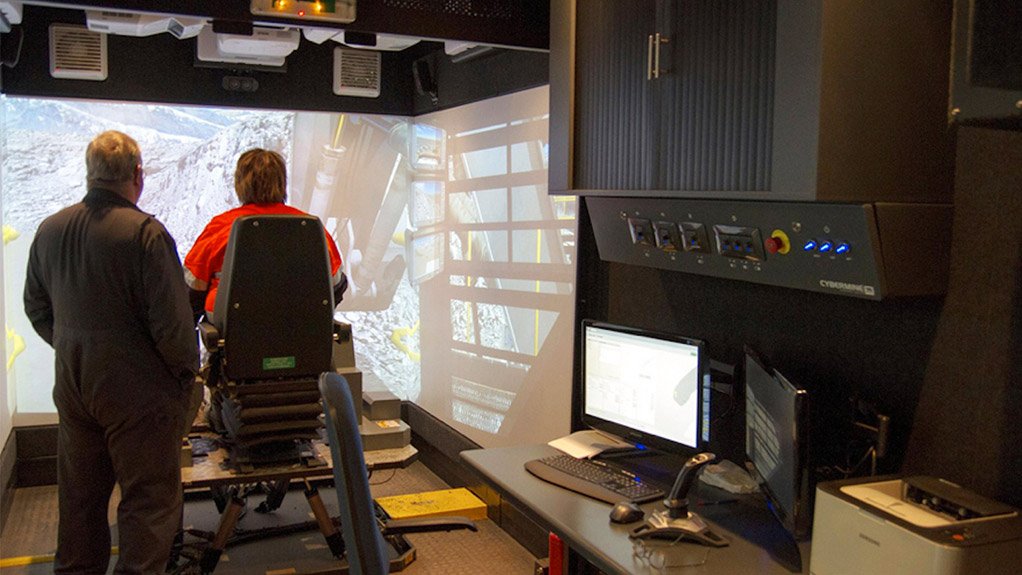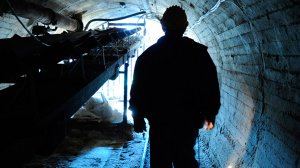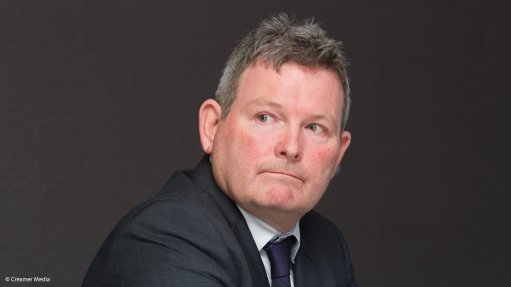Mining deaths, injuries at an all-time low, but TB and silicosis cases increase



CONCERNS REMAIN The Department of Mineral Resources is still “greatly concerned” about the high number of injuries reported
EDUCATIONAL EMPHASIS Skills development and education were key factors in tackling the major challenges of unemployment, inequality and poverty faced by the country
The declines in fatal and nonfatal injuries in the local mining sector last year were marred by the revelation that the latest available statistics for pulmonary tuberculosis and silicosis – for 2013 – show an increase in the incidence of the two diseases, prompting Mineral Resources Minister Ngoako Ramatlhodi to call on mining houses “to pay special attention to health matters”.
Ramatlhodi said at a media briefing in Tshwane late last month that the 84 mining fatalities reported in 2014 were the lowest ever and that the 2 569 injuries reported – an 18% decline on the 2013 figure – were also a record low.
However, he hastened to add that he lamented mining-related deaths and that he was still “greatly concerned” about the high number of injuries reported, particularly in light of the fact that the majority of these injuries were not the result of new types of accidents and were mainly the result of repeat accidents.
Further, Ramatlhodi pointed out that all mines were required to submit yearly medical reports in terms of the provisions of the Mine Health and Safety Act.
He said these reports indicated that the number of occupational diseases reduced from 18 371 during 2003 to 6 810 in 2013. The main ailments recorded over the period were pulmonary tuberculosis and noise-induced hearing loss.
However, Ramatlhodi noted that there had been an increase in the number of pulmonary tuberculosis cases reported, from 2 838 during 2012 to 3 255 in 2013.
There was also an increase in the number of silicosis cases reported, from 1 420 during 2012 to 1 430 in 2013.
Noise-induced hearing loss cases also increased from 1 075 during 2012 to 1 389 in 2013.
Meanwhile, Ramatlhodi stated that the poor implementation of health programmes at some mines remained a major concern for the Department of Mineral Resources (DMR).
“I would like to encourage the sector to pay special attention to health matters, as recently there are no noticeable improvements and they are the main cause of loss of life in the sector,” he emphasised.
Ramatlhodi added that the DMR would continue to engage its social partners through the Mining Industry Growth, Development and Employment Task Team, the Mine Health and Safety Council (MSC), the Mining Qualifications Authority (MQA) and through bilateral meetings to ensure that mine health and safety in the industry was prioritised.
Education and Training
Moreover, he stressed that skills development and education were key factors in tackling the major challenges of unemployment, inequality and poverty faced by the country.
“The DMR is collaborating with the Department of Higher Education and Training (DHET) and other stakeholders through the MQA to improve on skills development of the youth and mineworkers,” Ramatlhodi stated.
He added that the training of health and safety representatives and shop stewards using accredited institutions was also progressing well.
“The MQA is implementing programmes to provide learners in townships and rural mining areas with core mathematics and physical science [training], so that they can pursue professional and artisan skills in the mining sector,” Ramatlhodi explained.
He further noted that career guidance programmes, which were aimed at encouraging learners to pursue mining careers, were strengthening these initiatives.
“Learners are awarded MQA bursaries yearly,” Ramatlhodi stated, adding that bursaries were also issued for studies in the engineering fields, such as mining, electrical, mechanical and metallurgy.
“Other skills programmes offered by the MQA include artisan development and training for jewellery making, while improving the participation of women in mining is a priority,” said Ramatlhodi.
Additionally, he highlighted that the DMR was working with the MQA and the DHET in placing bursars, interns and students at various universities and companies to train them as future professional engineers, environmental scientists and surveyors.
Ramatlhodi said the assistance of these people could considerably boost the internal capacity of the DMR.
“This trainee initiatives will also assist in overcoming the challenge of our inability to attract and retain inspectors,” he averred.
Ramatlhodi added that the DMR, in collaboration with the MQA and mining
companies had started a learner inspector programme where, to date, about 50 graduates had been placed at various mines on a two-yearly basis to undergo experiential training, which would help the graduates in further studies and to become fully qualified inspectors.
Women in Mining
Further, the Minister noted that there had been a “welcome increase” of women participating in the mining sector since the promulgation of the Mineral and Petroleum Resources Development Act of
2002.
However, Ramatlhodi said that he was “deeply disturbed” by reported incidents of women experiencing sexual harassment and inhumane treatment by fellow workers in their under- ground workplaces and appealed to all stake- holders to ensure that interventions would be implemented to prevent the intimidation of women miners.
“There should also be more attention given to the health and safety of women in the mining sector. “Hence, the mining sector should continue to take appropriate measures to ensure that women have safe and dignified working environments,” he stressed.
Ramatlhodi also pointed out that the personal protective equipment (PPE) available for use in mines was not suitable for women mineworkers as the design of most PPE had been based on the male body structure.
In this regard, he said the DMR welcomed the research conducted through the MSC and expected that the implementation of the recommendations would assist the sector to provide appropriate PPE for women in mining.
“The MSC has also started with further research, which will assist the sector in continuously improving on the health and safety of women mineworkers,” Ramatlhodi concluded.
Comments
Press Office
Announcements
What's On
Subscribe to improve your user experience...
Option 1 (equivalent of R125 a month):
Receive a weekly copy of Creamer Media's Engineering News & Mining Weekly magazine
(print copy for those in South Africa and e-magazine for those outside of South Africa)
Receive daily email newsletters
Access to full search results
Access archive of magazine back copies
Access to Projects in Progress
Access to ONE Research Report of your choice in PDF format
Option 2 (equivalent of R375 a month):
All benefits from Option 1
PLUS
Access to Creamer Media's Research Channel Africa for ALL Research Reports, in PDF format, on various industrial and mining sectors
including Electricity; Water; Energy Transition; Hydrogen; Roads, Rail and Ports; Coal; Gold; Platinum; Battery Metals; etc.
Already a subscriber?
Forgotten your password?
Receive weekly copy of Creamer Media's Engineering News & Mining Weekly magazine (print copy for those in South Africa and e-magazine for those outside of South Africa)
➕
Recieve daily email newsletters
➕
Access to full search results
➕
Access archive of magazine back copies
➕
Access to Projects in Progress
➕
Access to ONE Research Report of your choice in PDF format
RESEARCH CHANNEL AFRICA
R4500 (equivalent of R375 a month)
SUBSCRIBEAll benefits from Option 1
➕
Access to Creamer Media's Research Channel Africa for ALL Research Reports on various industrial and mining sectors, in PDF format, including on:
Electricity
➕
Water
➕
Energy Transition
➕
Hydrogen
➕
Roads, Rail and Ports
➕
Coal
➕
Gold
➕
Platinum
➕
Battery Metals
➕
etc.
Receive all benefits from Option 1 or Option 2 delivered to numerous people at your company
➕
Multiple User names and Passwords for simultaneous log-ins
➕
Intranet integration access to all in your organisation




















